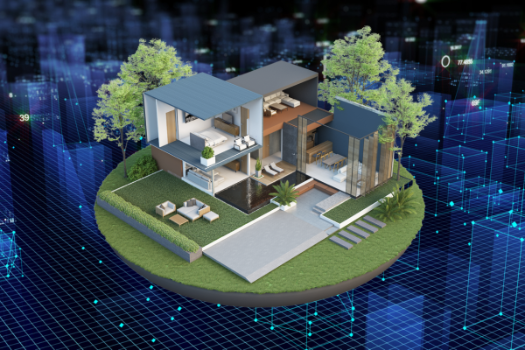.png)
The Role of BIM in Budget-Friendly Construction Planning
Introduction
Construction costs have been rising steadily in recent years. Materials, labor, and project delays all contribute to budgets spiraling out of control. For many, this creates a pressing need for smarter, budget-conscious planning.
Building Information Modeling (BIM) offers a solution. BIM is a digital tool that represents the physical and functional aspects of a construction project. It allows teams to plan, design, and manage projects with greater precision. By integrating data and visual models, BIM transforms how construction is approached.
BIM helps reduce costs in multiple ways. It improves project estimates, prevents errors, and fosters collaboration. These benefits make it a vital tool for budget-friendly planning. In this blog, we’ll explore how BIM ensures cost efficiency and smarter construction planning, paving the way for more affordable projects without compromising quality.
The Basics of BIM and Its Relevance in Cost Control
Building Information Modeling (BIM) is more than just a tool. It’s a digital representation of a construction project’s physical and functional characteristics. Think of it as a detailed map that shows every component of a building, from its structure to its systems. This comprehensive view helps teams make informed decisions at every stage of the project.

BIM’s core functionalities play a significant role in managing costs. Its visualization capabilities allow teams to see the entire project before construction begins. This reduces guesswork and highlights potential issues early. Collaboration is another key feature. BIM acts as a central hub where architects, engineers, and contractors can work together seamlessly. Finally, its data integration ensures that all project details, from materials to timelines, are updated in real-time.
Accurate estimates are one of BIM’s biggest advantages for cost control. By analyzing 3D models, teams can calculate precise material quantities and labor requirements. This minimizes the risk of unforeseen expenses caused by errors or miscalculations. With BIM, construction planning becomes more efficient, predictable, and cost-effective, making it an essential tool for budget-conscious projects.
Key Advantages of BIM in Budget-Friendly Planning
BIM brings several key advantages that make construction planning more budget-friendly. Its ability to provide accurate cost estimates, detect design conflicts early, and enhance collaboration ensures projects stay on track and within budget.
Accurate Cost Estimation
BIM’s 3D models help teams calculate material quantities and labor needs with precision. This eliminates guesswork and ensures budgets are realistic. By reducing reliance on manual processes, BIM minimizes errors that often lead to unexpected costs. Accurate estimates save time and money by preventing the need for adjustments later in the project.

Early Detection of Design Conflicts
One of BIM’s standout features is clash detection. It identifies conflicts between different systems, like plumbing and electrical, during the design phase. By addressing these issues early, teams avoid costly rework during construction. BIM’s simulation tools also highlight potential budget overruns before they occur, giving teams time to adjust plans and stay within limits.
Enhanced Collaboration
BIM acts as a single source of truth for all project data. This centralization makes it easy for architects, engineers, and contractors to stay aligned. With everyone working from the same set of information, communication is streamlined, reducing delays and confusion. Better collaboration ensures projects are completed on time, avoiding extra costs linked to schedule overruns.
These advantages make BIM a powerful tool for planning cost-effective and efficient construction projects.
BIM Tools for Budget Optimization
BIM tools are designed to optimize budgets by improving decision-making and resource management. One way BIM does this is by helping teams select materials wisely. With its detailed models, BIM provides insights into material quantities, types, and costs. This allows project planners to choose options that balance quality and affordability while reducing waste.

Efficient resource allocation is another benefit of BIM. By integrating schedules and budgets, BIM ensures that labor, equipment, and materials are used effectively. This reduces idle time and keeps projects moving forward without unnecessary expenses.
BIM also offers real-time cost updates during project planning. As designs are adjusted, BIM recalculates expenses instantly. This helps teams see how changes affect the budget and make informed decisions to avoid overruns. Real-time updates provide transparency, keeping everyone on the same page financially.
Data-driven insights are at the core of BIM’s cost optimization capabilities. By analyzing project data, BIM tools highlight opportunities for savings. For instance, they can identify alternative construction methods or phasing strategies that cut costs without sacrificing quality. These insights empower teams to develop smarter, more cost-effective construction plans.
With its focus on efficiency and accuracy, BIM ensures that budgets are optimized from start to finish.
Challenges and Considerations in Adopting BIM
Adopting BIM for cost management comes with its challenges. One major barrier is the initial investment. Setting up BIM requires software, hardware, and training, which can feel overwhelming for smaller teams. Another hurdle is the learning curve. Using BIM effectively demands new skills, and teams may need time to adapt. Additionally, resistance to change can slow down adoption. Traditional methods are often deeply ingrained, making it hard for teams to embrace new technologies.

These challenges, however, can be addressed. Training programs help employees build confidence and understand BIM’s value. Gradual implementation allows teams to adopt BIM in smaller steps, reducing the upfront burden. Most importantly, showcasing BIM’s return on investment (ROI) can ease resistance. When teams see how BIM reduces costs and improves efficiency, its value becomes undeniable.
With the right approach, these barriers can be overcome, making BIM an essential tool for cost management.
Future of BIM in Cost-Effective Construction
The future of BIM is evolving rapidly, bringing even greater cost-saving opportunities to the construction industry. Trends like artificial intelligence (AI) and digital twins are enhancing BIM’s capabilities. AI can analyze vast amounts of project data to provide smarter predictions about costs, timelines, and potential risks. Digital twins, which are virtual replicas of physical buildings, allow teams to test scenarios in real-time, minimizing costly mistakes before they happen.

Emerging technologies are also making BIM more accessible, even for projects with smaller budgets. Cloud-based BIM solutions reduce the need for expensive hardware, while modular tools let teams adopt BIM incrementally. This flexibility ensures that even smaller firms can leverage the benefits of BIM without overextending resources.
As these advancements continue, BIM will play an even larger role in creating cost-effective, efficient, and high-quality construction projects for teams of all sizes.
Conclusion
BIM has revolutionized construction planning by making projects more budget-friendly and efficient. Its ability to provide accurate cost estimates, detect design conflicts early, and enhance collaboration has made it an essential tool for cost-conscious teams. By supporting smarter material selection, efficient resource allocation, and real-time cost updates, BIM ensures better control over budgets.
Adopting BIM is not just a short-term solution; it’s an investment in long-term cost savings and project success. As technology advances, BIM will continue to unlock even greater potential, making it a must-have for any team aiming to build smarter and more affordably.